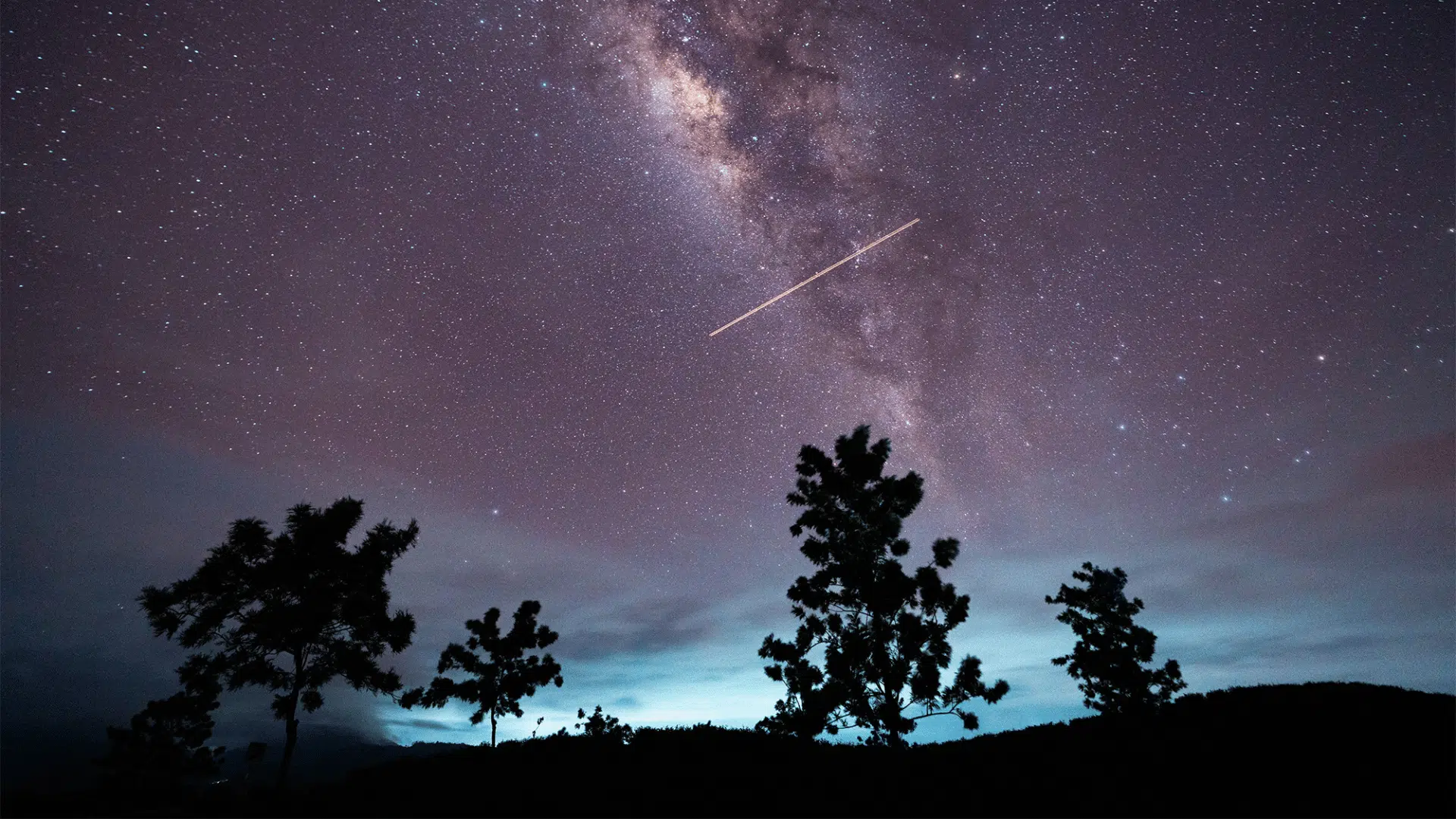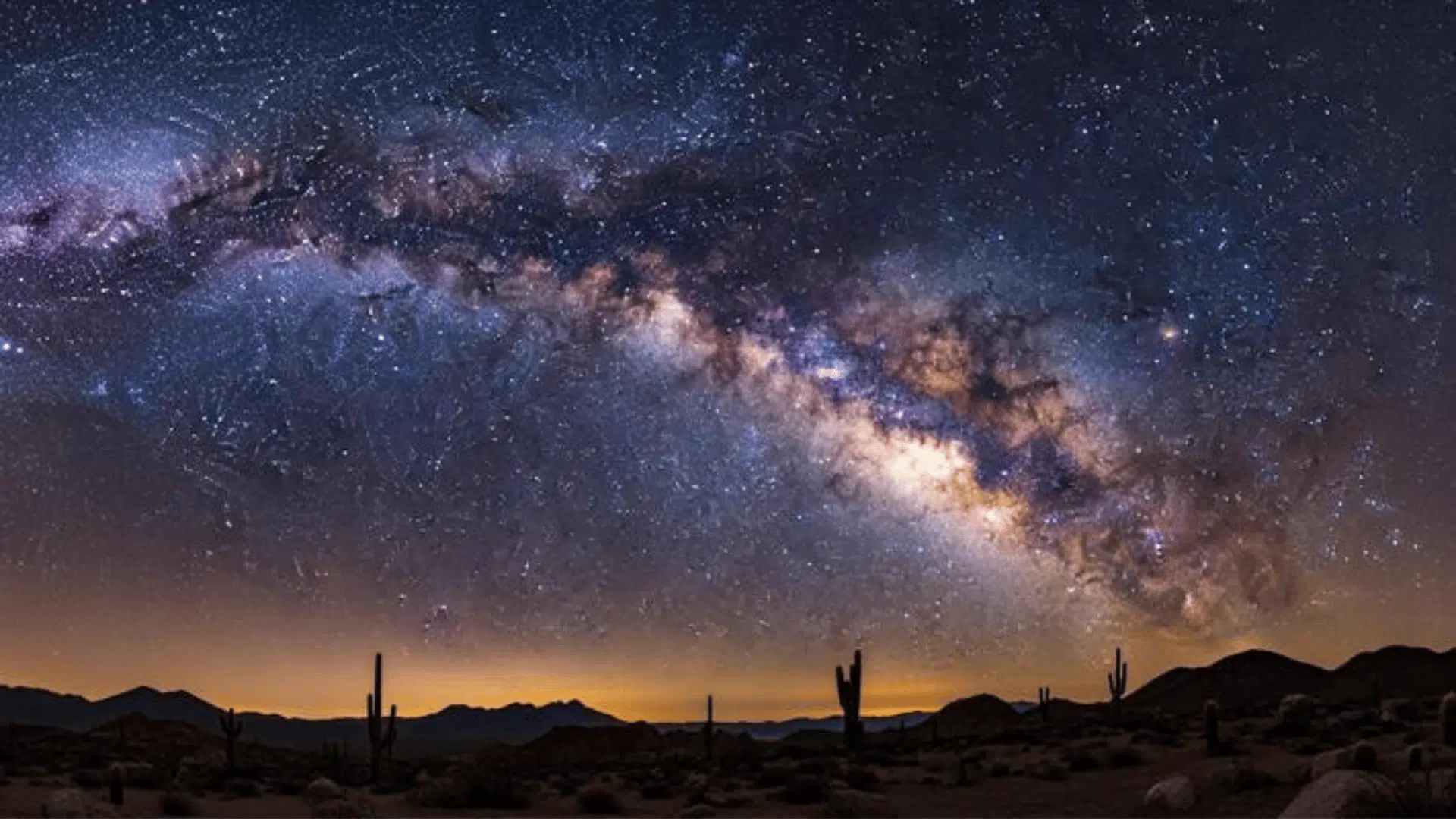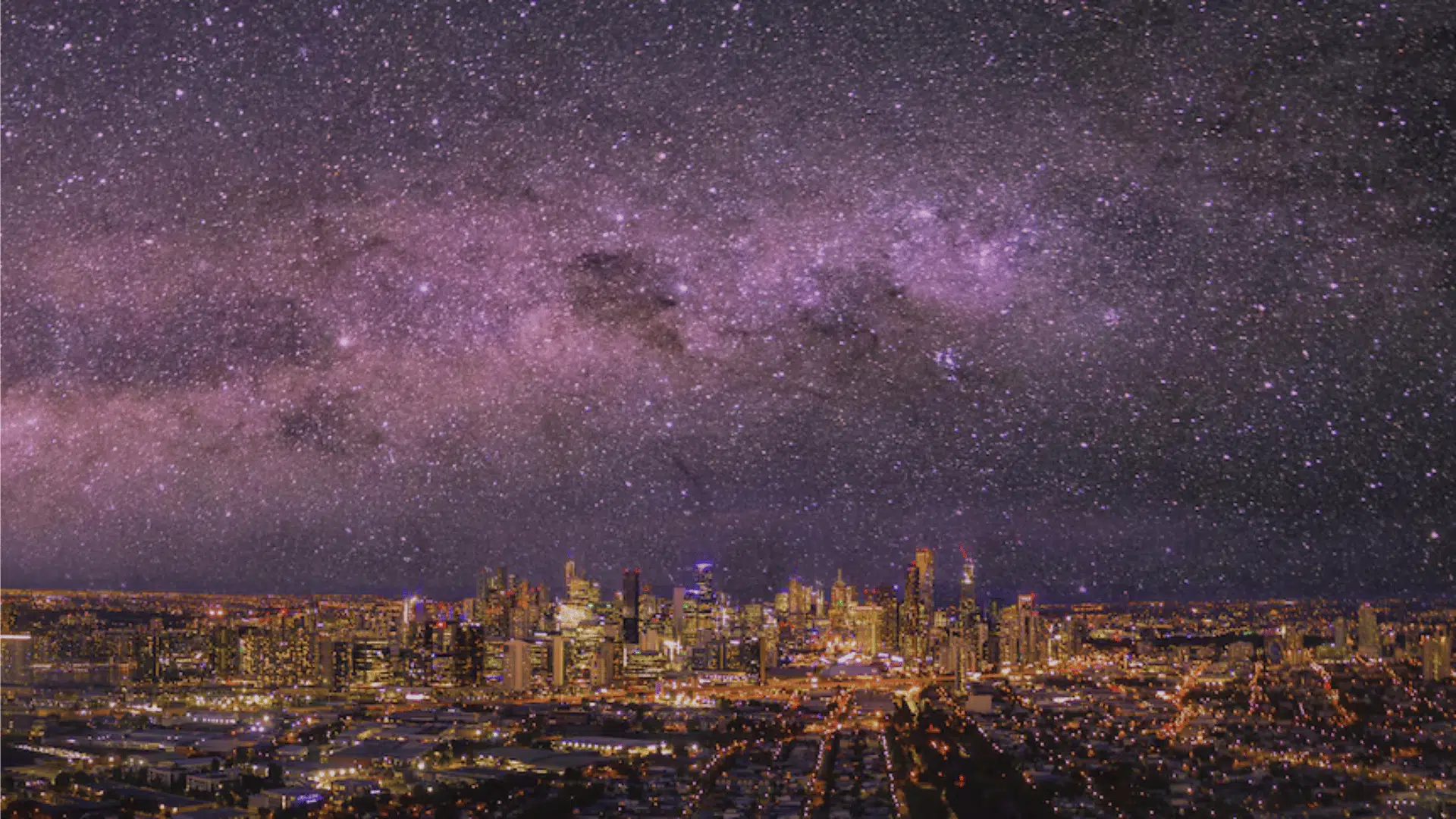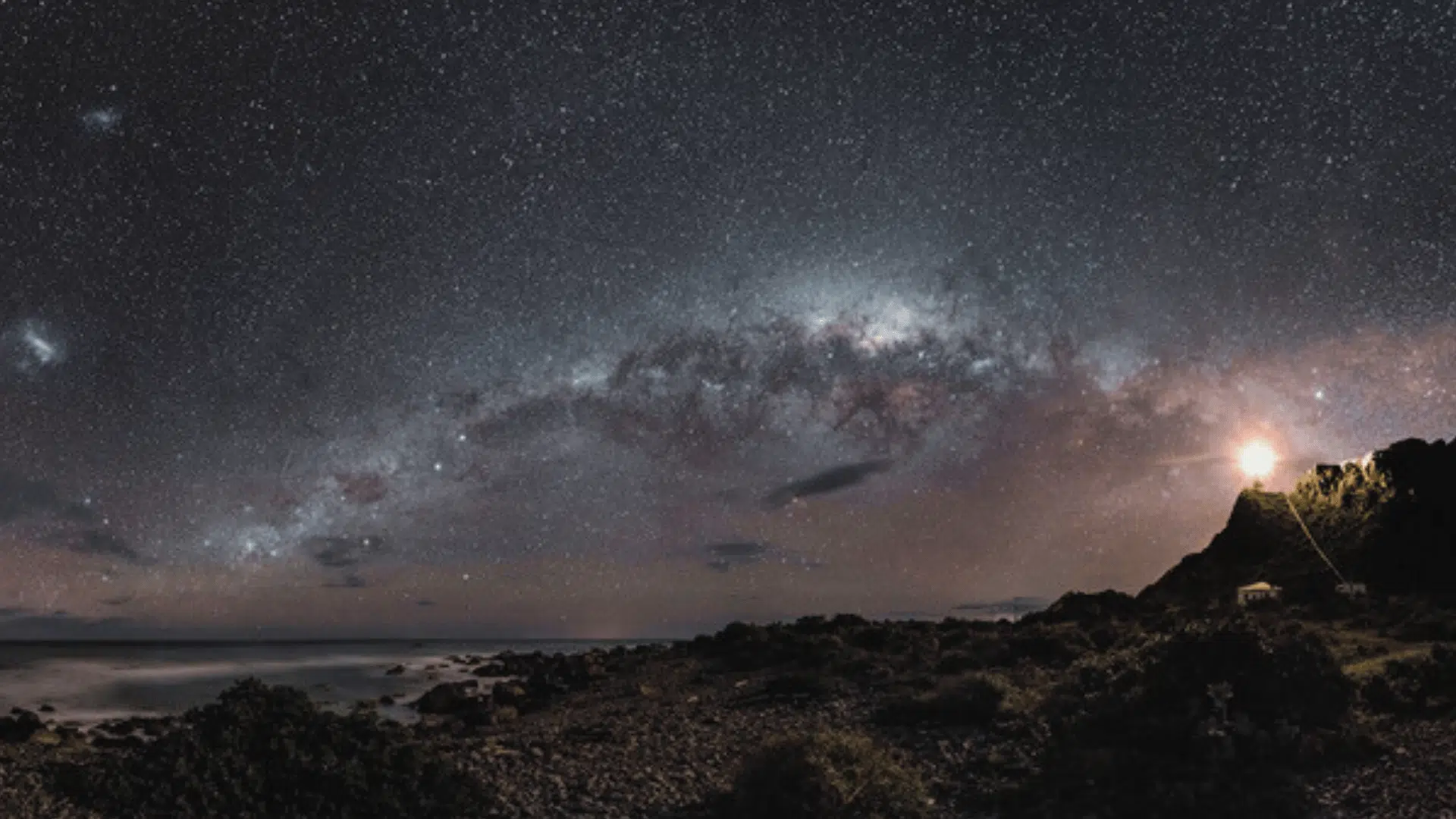Have you ever looked up and wished you could see the Milky Way night sky? This glowing band of stars stretches across the heavens like a silver ribbon, reminding us of the vast galaxy we call home.
While city lights can make it harder to spot, the Milky Way is still one of the most magical sights you can witness with your own eyes.
The good news is that with the right location, timing, and a little patience, anyone can enjoy its beauty.
This blog will share simple tips to help you spot the Milky Way and make your stargazing nights unforgettable. Ready to begin your look under the stars?
What is the Milky Way Among Galaxies?
The Milky Way is the galaxy in which we live. A galaxy is a giant family of stars, planets, gas, and dust, all held together by gravity.
Scientists say there are billions of galaxies in the universe, but the Milky Way is the one we call home. It is shaped like a spiral, almost like a giant pinwheel, with long arms stretching outward.
Our solar system, including Earth, sits on a small arm called the Orion Arm. When you look up at a clear, dark night sky, the Milky Way appears as a bright, cloudy band.
While other galaxies are far away, this one is close enough for us to see and study, giving us a window into the universe.
Understanding the Structure of The Milky Way


Image Source: Popular Science
The Milky Way is our home galaxy, and it’s full of wonder. Shaped like a giant spiral, it has many parts that work together to form the glowing band we see in the sky.
- Galactic Center: At the core sits a supermassive black hole called Sagittarius A*. It’s hidden by dust and gas. This center is about 26,000 light-years from Earth.
- Spiral Arms: These sweeping arms stretch out from the center, packed with stars, nebulae, and star-forming clouds. Earth rests in a smaller branch known as the Orion Arm.
- Halo and Globular Clusters: Around the galaxy lies a large halo filled with very old stars and star clusters that shine like ancient beacons.
- Disk and Bulge: The thick bulge holds older stars, while the thin disk is where new stars continue to form.
- Stellar Populations: Astronomers group stars by age and type. The bulge and halo contain older stars, while the arms and disk are home to young, bright stars.
- Dark Matter Halo: Invisible to the eye, this vast halo of mysterious dark matter surrounds the galaxy and makes up most of its mass. It helps hold the Milky Way together.
- Interstellar Medium: Gas and dust fill the spaces between stars. This material fuels the birth of new stars and shapes nebulae that we can sometimes see from Earth.
What Part of The Milky Way is Visible from Earth?
When we look up at the Milky Way, we can never see the whole galaxy at once. That’s because we live inside it, so our view is limited to just certain parts.
To the eye, it appears as a glowing band made up of billions of stars stretching across the night sky, almost like a sparkling river above us.
The brightest and most stunning region is the galactic center, which shines best from very dark locations with little light pollution.
If you’re in the Southern Hemisphere, you’ll get the clearest and most detailed view of this dazzling core.
From the Northern Hemisphere, the Milky Way is still visible, though the band looks smaller. Wherever you are, clear skies and dark places always offer the best view.
Tips for Viewing the Milky Way Around the World


Image Source – Vectezzy
The Milky Way offers unique views depending on where you are. Look at some of the best regions to plan your stargazing adventure:
1. United States
National parks in the U.S. offer incredible stargazing. Bryce Canyon in Utah and Big Bend in Texas are top spots with almost no light pollution.
During summer, the Milky Way’s core is easy to spot, and some parks even host astronomy nights with experts.
The wide open skies and natural landscapes make these parks perfect for both casual stargazers and photographers hoping to capture the galaxy’s bright glow.
2. South America
South America offers some of the clearest views in the world. The Atacama Desert in Chile, one of the driest places on Earth, is a top spot for astronomers.
Its high altitude, clear skies, and dry air make the stars appear brighter and sharper. Visitors often join guided night tours with telescopes.
But the Milky Way is so bright here that you can enjoy it with just your eyes. The experience feels almost otherworldly.
3. Europe
Europe has many dark-sky reserves where the Milky Way shines clearly once you leave city lights behind.
Areas in Scotland, Spain, and Slovenia are popular choices, with rural landscapes offering open horizons.
Stargazing festivals are often held in these regions, drawing both travelers and locals.
If you search the rugged Scottish Highlands or Spain’s remote Canary Islands, you’ll find plenty of chances to enjoy the Milky Way on clear, moonless nights.
4. Australia
Australia’s Outback is a dream spot for stargazers. With its vast, empty lands and little to no light pollution, the Milky Way appears in breathtaking detail.
The galactic core can be seen high overhead during the winter months in the Southern Hemisphere. Many Indigenous groups in Australia also share ancient star stories, adding cultural meaning to the view.
Camping under the stars or joining a guided night tour, the Outback offers unforgettable sky-watching experiences.
5. Africa
Africa is home to wide-open deserts and clear skies that make stargazing easy. The Karoo Desert in South Africa is one of the best places to see the Milky Way.
Its dry climate and little light pollution let the stars sparkle brightly. Local lodges and reserves often offer stargazing tours where you can learn about constellations and astronomy.
Watching the Milky Way here feels magical, as the galaxy stretches across the sky in brilliant detail.
Finding the Perfect Viewing Conditions


Image Source: ABC News
Seeing the Milky Way takes more than just glancing at the sky. You’ll need the right mix of time, place, and patience to enjoy its beauty.
- Dark Skies: City lights make the stars disappear. Travel to a rural area, desert, or dark-sky park where the sky is truly black.
- The Right Moon Phase: A full moon shines too brightly. The new moon, or the days close to it, give you the clearest Milky Way views.
- Clear Weather: Clouds and haze block your view. Pick a night with crisp, clear skies and low humidity for the best results.
- Best Time of Year: In most areas, summer nights are perfect. This is when the galactic core shines brightest and highest in the sky.
- Let Your Eyes Adjust: Avoid flashlights and phone screens. Give your eyes 20–30 minutes in the dark so faint stars become visible.
- High Places Help: Climb a hill or mountain. The thinner air reduces haze, and you’ll see more of the night sky at once.
Challenges and Solutions to View the Milky Way
Spotting the Milky Way isn’t always easy. Here are some common challenges stargazers face and simple solutions to make your view clearer:
| Challenge | Solution |
|---|---|
| Light Pollution | Travel to rural areas, dark-sky reserves, or deserts where city lights can’t reach. |
| Bright Moonlight | Plan your viewing around the new moon for the darkest skies. |
| Cloudy or Hazy Weather | Check forecasts and pick nights with clear skies and low humidity. |
| Short Viewing Windows | Learn the best times of year; summer is often best for the galactic core. |
| Eyes Not Adjusted | Avoid phones and flashlights, and wait 20–30 minutes for your eyes to adapt. |
| Limited Horizon View | Go to higher ground, such as hills or mountains, for a wider and clearer sky. |
Common Myths and Misconceptions About Milky Way Viewing
Many people are surprised that the Milky Way does not look the same in real life as in photos. Long-exposure cameras can gather much more light than our eyes.
That is why pictures look brighter and more colorful. Some photos also use false colors to show gas and dust, so the colors may not be what you see.
For first-time viewers, the Milky Way will look like a glowing band of light, not a rainbow. The weather also matters.
A night that looks “clear” may still have haze or moisture that blurs the stars. Higher places, such as mountains, often offer a sharper view.
You do not need costly tools. In dark skies, the Milky Way is easy to see with your eyes. Remember, it changes with the seasons, so timing is important.
Conclusion
Spotting the Milky Way in the night sky is one of the most magical sights you can enjoy. With dark skies, the right moon phase, and a little patience, you can see our galaxy stretch across the heavens.
Remember, it won’t always look like the colorful photos online, but the real view is even more special because it’s yours to experience with your own eyes.
If you’re in the mountains, desert, or a dark-sky park, each location offers a unique window into our galaxy. Keep planning your stargazing nights, try different seasons, and enjoy the beauty above.
For more simple guides on skywatching and night sky tips, stay tuned, and don’t forget to share your Milky Way moments with others.


















